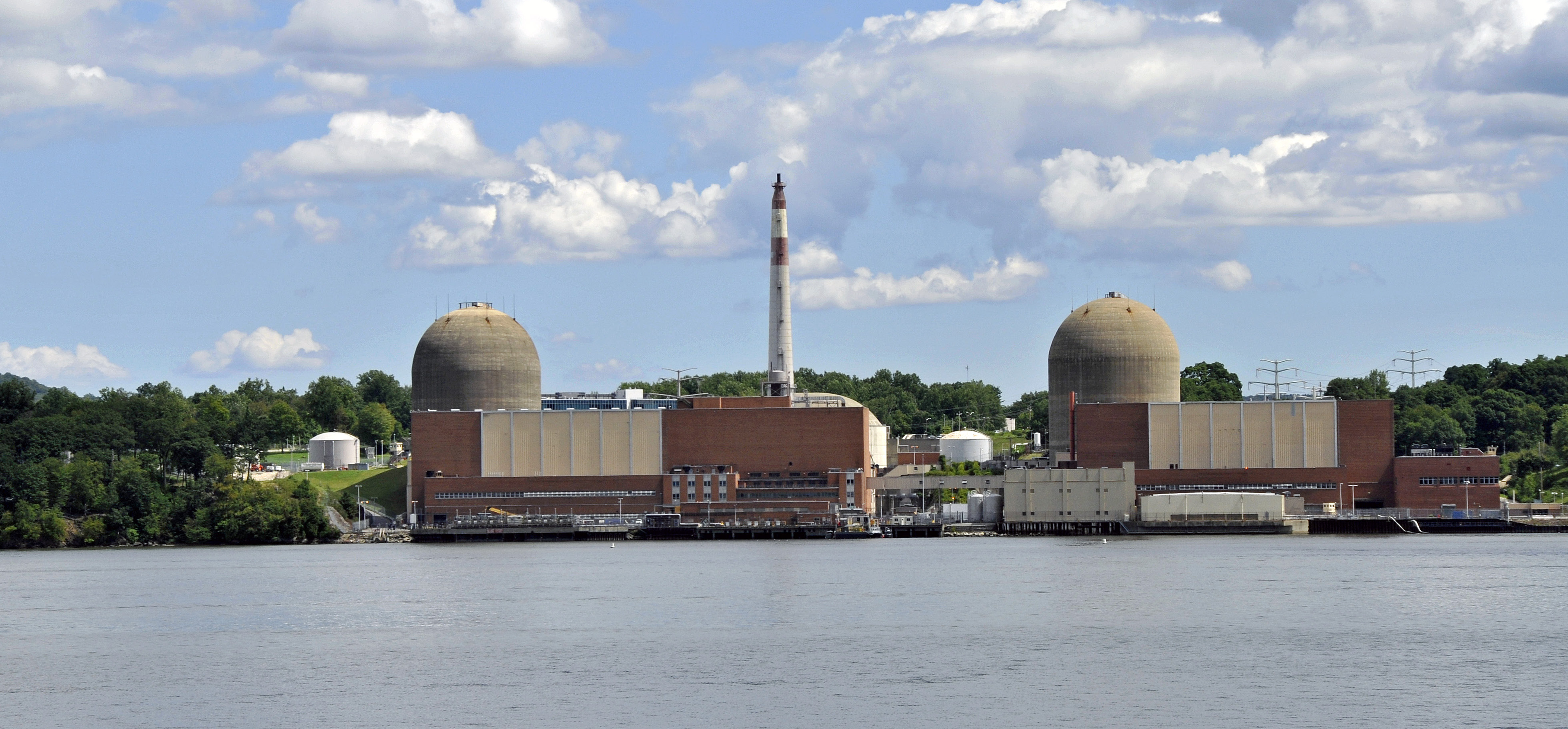Nuclear Power
The New York Times reported over the weekend that dozens of U.S. reactors are more vulnerable to earthquakes than previously believed. The NRC has been requiring utilities to re-evaluate their ability to withstand possible earthquakes in their regions based on growing knowledge about plate tectonics and the nature of earthquakes–a process that began before, but was certainly underscored by, the Fukushima disaster. But even though this has been an NRC initiative, don’t expect a quick or strong NRC response. Instead, the agency’s basic pronouncement is: Don’t close them, just study the issue some more. Oh, and don’t worry, be happy. In the NRC’s official blog, the agency lays out its plans for the issue, which includes at least three more years of study before any real action is taken (and one shouldn’t actually expect any real action from NRC then either–if there is to be action, it will have to be from governors and state legislatures, not the NRC). The studies don’t even include those reactors in the most seismically active areas on the west coast–they have another full year to complete even their initial studies. But New York’s Indian Point is included and found more vulnerable to feasible earthquakes than designed for; that’s likely to be further ammunition in a growing campaign to close those reactors.

Meanwhile, what is expected to be a three-week hearing on Indian Point’s antique once-through cooling system, which causes severe damage to the marine ecosystem of the Hudson River, kicks off today in Albany. Riverkeeper and the State of New York want Entergy to be forced to build cooling towers for the reactors if they want to keep operating them (though both also oppose continued operation), at an estimated cost of about $1.6 billion–probably enough to make it uneconomical to continue operations. The State Department of Environmental Conservation calculated that such a system would reduce fish kills by 98%. For its part, Entergy denies even killing fish, and wants to put in a much cheaper, and much less effective, screen system to prevent fish and larva from being drawn into the plant along with cooling water and roasted.
A Department of Energy official told Congress that the U.S. would have to subsidize use of plutonium/MOX reactor fuel in commercial nuclear reactors if the MOX plant Obama wants to shutter is completed. The Obama Administration’s latest budget calls for putting the facility in cold standby and ending construction on a project whose projected lifetime cost has reached some $30 Billion–far more than originally projected. But that number doesn’t include subsidies just to get utilities to use the MOX fuel, which would be far more expensive to them than normal uranium fuel. Nonetheless, a small group of mostly South Carolina legislators, led by Sen. Lindsey Graham (R-SC), is working hard to keep the pork barrel money funneled to the state regardless of the merits of the project. Meanwhile, while the Obama Administration has not yet stopped work on the project, and some media accounts last week pointed out that work at the site is continuing and no one has been laid off, Anne Harrington, deputy administrator for defense nuclear nonproliferation for the National Nuclear Security Administration, said a stop work order is on the way.
Florida Power & Light (FPL) says an inspection of the steam generator tubes at its St. Lucie-2 reactors shows less degradation than it had predicted, but the utility refused to say how many tubes now show signs of degradation. It looks like FPL plans to wait six months, until a report is required to be filed with the NRC, to reveal that information. But the utility did admit that it had plugged 69 tubes at both units already this year. The NRC says, of course, that there is no safety issue here. Well, at least there won’t be until one of the degraded tubes ruptures a la San Onofre (and several other reactors over the years). But there may well be an economic issue ahead for FPL ratepayers. Nuclear engineer Arnie Gundersen warns that “The bottom line is, it was the worst in the nation before the outage, and it’s even worse now. These numbers are astronomical. The steam generators just can’t get to the end of their useful life.”
This has been self-evident for years, but it’s clearly worth repeating. Ed Lyman, senior scientist for the Union of Concerned Scientists told a group in Chicago last week that nuclear safety requires appointment of new NRC Commissioners. “It’s common knowledge in Washington that anyone nominated to be a commissioner to the NRC has to be pre-approved by the nuclear industry,” he said. “In order to get a more independent mindset, you’ve got to break that stranglehold.”

More fallout from the Russian takeover of Crimea and its continued efforts to destabilize Ukraine: Finns are having second thoughts over a proposed new Russian reactor project there. A new public opinion poll finds that nearly half now oppose the project, while only a third support it. Unlike most other European countries however, Finns in general are supportive of nuclear power, with more than half still supporting new nuclear construction–just not with Russian reactors.
Clean Energy
Billionaire Tom Steyer and NRG Energy CEO David Crane are two of the most vocal and active people shaping America’s energy future: Steyer through his efforts on climate change and particularly to stop the Keystone XL pipeline and Crane by attempting to build the utility of the future. The two of them appeared at the Clean Energy Challenge in Chicago Thursday and separately laid out their visions of our energy future. Crane in particular has been harshly critical of most electric utilities, and repeated his belief that distributed generation is going to upend the utility industry over the next decade. He also answered questions about nuclear power, saying, “Nuclear power is probably the biggest asset we have in the fight against climate change,” Crane said, noting his decision to pull the plug on a Texas project just weeks after the Fukushima Daiichi disaster in Japan. “But I’m a business guy and I’m a pragmatist, and there’s no future for nuclear in the United States. There’s certainly no future for new nuclear.”
A long and thoughful article from High Country News on the upcoming issue of rooftop solar and “grid defection.“ The piece wonders whether the greater ability of the better-off to install rooftop solar and, in the not-distant future leave the grid, will cause a new “electrical divide” between the more fortunate and those less well-off as well as inner-city and apartment residents without rooftop space.
A useful infographic from EnergyFactCheck.org on subsidies for nuclear power and fossil fuels versus those for renewables. A few (among many) nuggets:
*The oil and gas industries have received approximately $446.96 billion in subsidies from the United States, as opposed to just $5.93 billion for renewables, since 1918.
*Eliminating the 12 subsidies for fossil fuels in the U.S. would save $41.4 billion over 10 years without increasing fuel prices, reducing employment, or weakening U.S. energy security.
*The nuclear power industry has received four times more subsidies than the distributed solar industry and has had six times longer to mature.
Michael Mariotte
April 7, 2014
Permalink: https://www.nirs.org/2014/04/07/nuclear-newsreel-monday-april-7-2014/
You can now support GreenWorld with your tax-deductible contribution on our new donation page here. We gratefully appreciate every donation of any size–your support is what makes our work possible.
Comments are welcome on all GreenWorld posts! Say your piece above. Start a discussion. Don’t be shy; this blog is for you.
If you like GreenWorld, you can help us reach more people. Just use the icons below to “like” our posts and to share them on the various social networking sites you use. And if you don’t like GreenWorld, please let us know that too. Send an e-mail with your comments/complaints/compliments to nirs@nirs.org. Thank you!
Note: If you’d like to receive GreenWorld via e-mail daily, send your name and e-mail address to nirs@nirs.org and we’ll send you an invitation. Note that the invitation will come from a GreenWorld@wordpress.com address and not a nirs.org address, so watch for it.




The link for FPL/Port St. Lucie doesn’t work. It takes one back to the same page the link is on.
Our apologies! We had a tough time with links yesterday! The link has been corrected.
Thanks, Michael.
John Miller, Ph.D.